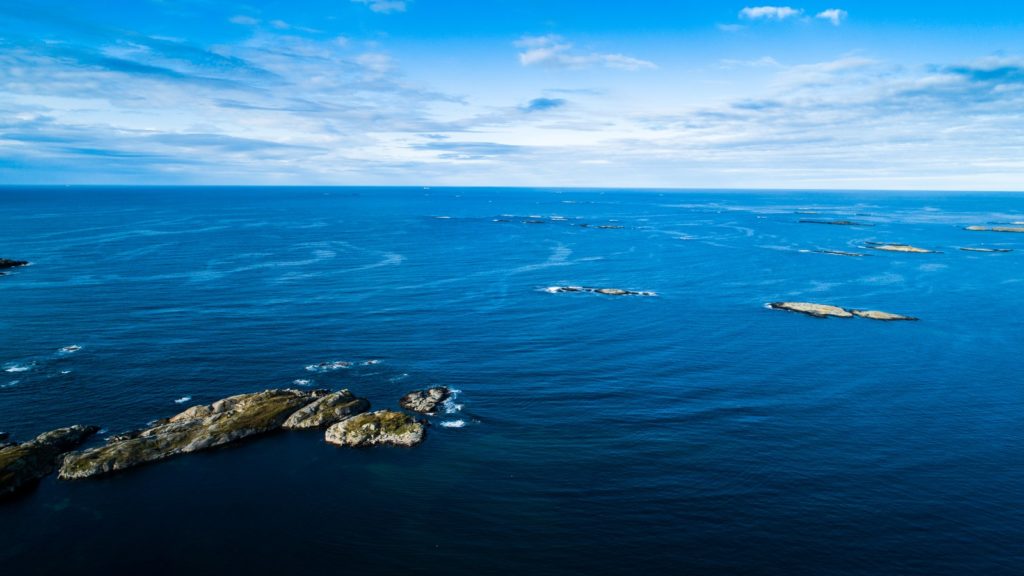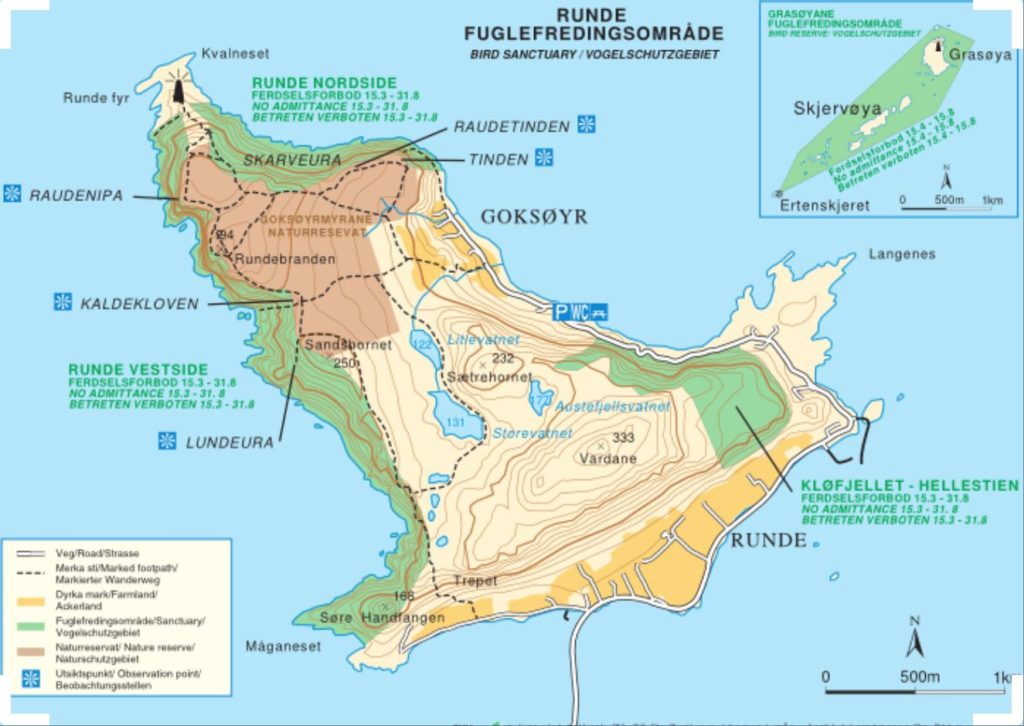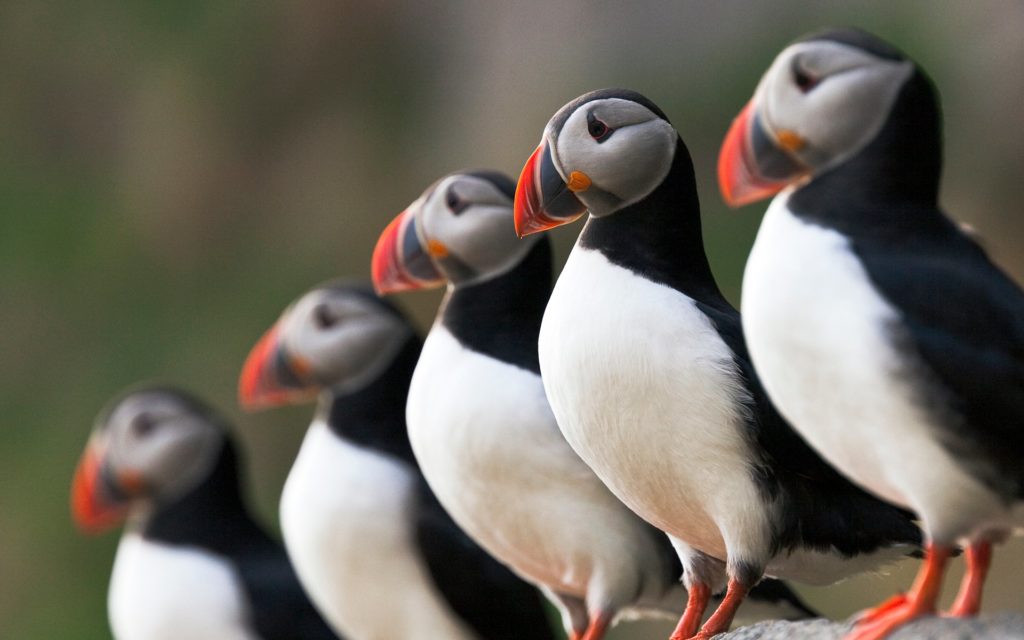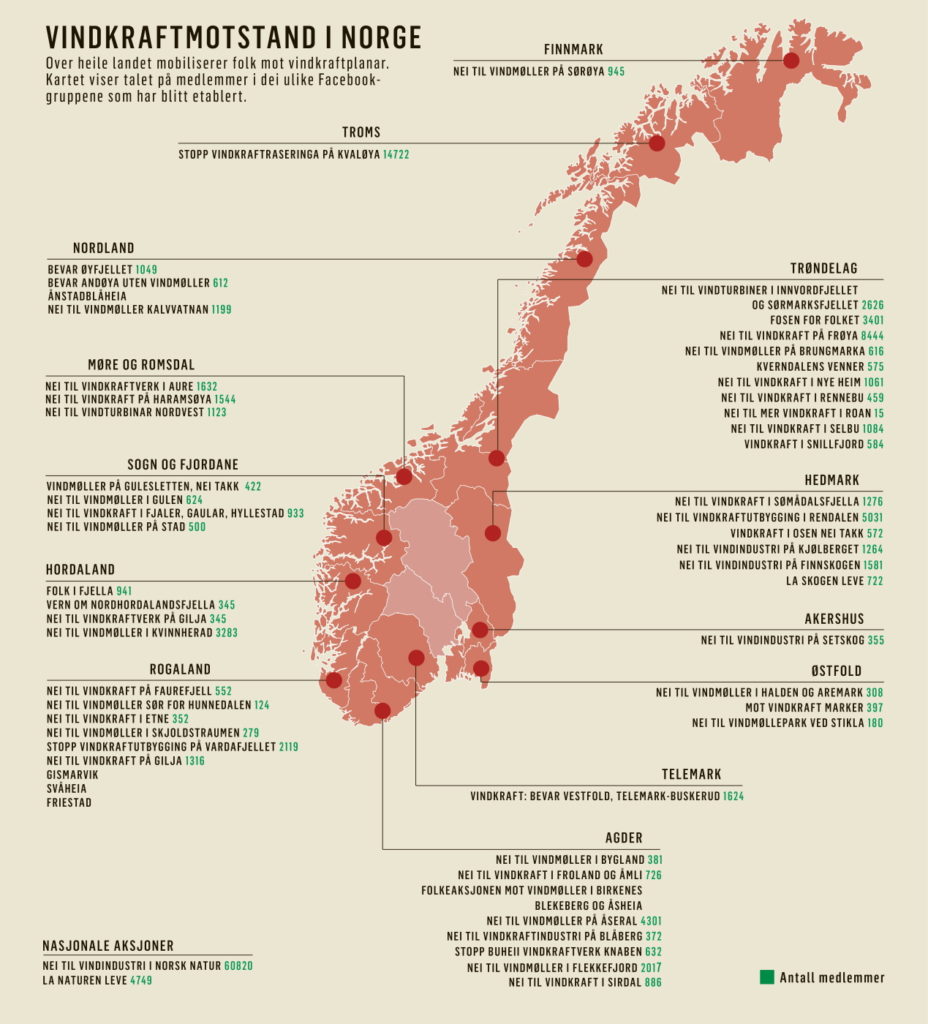
Photo: ØYVIND SANDNES / NRK
Frontpage photo: Arild Hareide / Rundø Miljøsenter
Watch the NRK documentary: The Battle against the wind power turbines
NORWAY: Capitalism is riding the winds of change. It divides the environmentalists’ quest for a sustainable future. Quite a few climate organizations seem to argue and publicly defend that aesthetics and nature will have to do with wind turbines scattered around as long as our CO2 footprint is lowered.
– Does not nature have its own value?
They fail to see the full picture of the Sustainable Development Goals as stated by the United Nations. Not acknowledging that nature and the many species of the world have to be protected at the very same time as we phase out fossil energy for sustainable energy and they do not seem to bother to make (not their cause/not their fight) a society where wealth is more equally distributed.
– Do they not watch the news from riots all over the world demanding justice for the poor?
Municipalities and landowners are tempted by promised jobs, taxes and money, while ornithologists, fishermen and local people enjoying the outdoors, the quietness of nature and the magnificent views of untouched nature are picking a fight.
– Is it not true that tourists say they come for the unspoiled nature?
Runde the Puffin Island
Runde is a small island in Herøy in the south-west of Møre og Romsdal county. The island with only 90 inhabitants has the southernmost seabird colonies in Norway and the most species-rich seabird sanctuary in Scandinavia with large populations of Atlantic puffin, Black-legged kittiwake, Common Shag, Northern Gannet, and Northern fulmar. The island is also known for the gold and silver treasure that was found at Kvalneset in 1972. The treasure was the cargo of the ship Akerendam from the Netherland, shipwrecked during its maiden voyage outside Runde in 1725. Coins and other artifacts from the ship can be seen in the exhibition at the Runde Environmental Centre. In 2013, four bird protection areas and one nature reserve on Runde was named a “Ramsar Wetland of International Importance”. This means that Norway has committed to maintain the ecological character of the area and to plan for the “wise use”, or sustainable use, of all of the wetland area.

Havsul 1
The 350MW bottom-fixed Havsul 1 offshore wind project, being developed by Canada’s Enbridge, would be built to provide additional power to the Nyhamna onshore gas processing plant in southwestern Norway. The wind farm, which would consist of about 40 ultra-large turbines mated to concrete gravity-base foundations in some 30 meters of water, would support output from a refinery that has struggled for years with an unreliable single-line grid link. Power from Havsul 1 will also enhance the energy security of the local grid. “This project will provide strong social, environmental and [regional] economic benefits as well as supporting Norway’s transition to a low carbon economy,” says Veenu Narula, vice-president of Enbridge’s power business operations.


Skyggekast – moving shadow from wind turbines
How would you like to do your family Sunday hike in such environments?
This article will be updated
– feel free to make contact for input and updates jante@bergensia.com.
Recommended further reading from Harvest Magazine on the wind magnates and the wind industries destructible appetite for Nature
(in Norwegian):
https://www.harvestmagazine.no/artikkel/sjonfjellet-er-de-helt-tulleruske




32 Comments
Pingback: Goal 7: Affordable and Clean Energy - Bergensia
Pingback: freegayporn.tube
Pingback: เว็บแทงบอล UFA กับ LSM99DAY
Pingback: สล็อตฝากถอน true wallet
Pingback: ลงประกาศขายคอนโดฟรี
Pingback: สล็อตออนไลน์ เว็บตรงไม่ผ่านเอเย่นต์
Pingback: กระเบื้องปูพื้น ภายนอก
Pingback: Доставка авто з США
Pingback: Lsm99love เกมแตกหนักเยอะ
Pingback: Graphics
Pingback: เค้กด่วน
Pingback: ซักรีดโรงแรม
Pingback: https://mvegascredit.com/2025/03/02/pocket-option-broker-vash-nadezhnyj-partner-v-mire/
Pingback: slot99
Pingback: essentials
Pingback: รีเบต xm
Pingback: สินค้าจีน
Pingback: พลาสติกปูพื้นก่อนเทคอนกรีต
Pingback: av
Pingback: ไซด์ไลน์
Pingback: situs toto
Pingback: siamese 31
Pingback: trusted drugstore in colorado
Pingback: Alexander Debelov
Pingback: Buy Villa Phuket
Pingback: sa789
Pingback: คลินิกความงามใกล้ฉัน
Pingback: รับสร้างบ้านหรู เชียงใหม่
Pingback: Coin Strike game for real money
Pingback: Shinkolite
Pingback: รับทำเว็บไซต์
Pingback: โคมไฟ